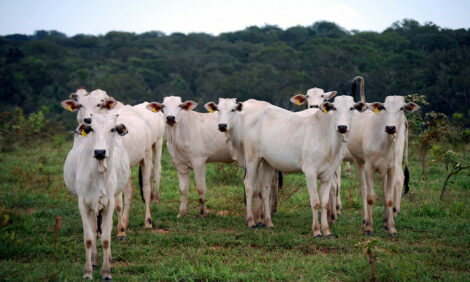



A Tender Relationship with Beef
US - What makes people choose beef? This is the question that has recently been posed by the brand Certified Angus Beef (CAB) in their quest to discover what shifts 24 billion pounds worth of US beef from shelf to plate each year.| Beef: the nation's favorite |
“People who prefer beef over pork, lamb and poultry do so because of beef’s unique flavor,” says Gary Smith, Colorado State University (CSU) meat scientist.
Even though beef was approximately 31% more expensive than pork and 128% higher than chicken in 2007, consumers still turned to beef as a favorite.
“It isn’t consistency of tenderness because both lamb and poultry are—on average—more tender than beef,” Smith says. “‘People will pay more for greater satisfaction, and taste is their measure of satisfaction in food.”
A University of Nebraska-Lincoln (UN-L) study confirms that.
“Everybody’s trying to sort for tenderness,” says Chris Calkins, UN-L meat scientist. He wondered where that might lead: “If we get to the point where we can guarantee tenderness, will marbling count for anything?”
In the 2001 study, tenderness was held constant on strip loins, while consumers from Chicago and San Francisco sampled them and voted with dollars.
“In the taste-panel phase, participants rated the high- and low-marbling steaks that had been paired for tenderness, using an 8-point scale for juiciness, tenderness and overall acceptability,” Calkins says. “Panelists found a flavor advantage, a juiciness advantage and overall acceptability advantage to the high-marbled steaks.”
Given cash to bid on the meat they tested, and among those who showed a consistent preference, it was three-to-one in favor of higher marbling in Chicago and two-of-three with the same preference in San Francisco.
At Texas Tech University, researchers also found that marbling matters – a lot. “Beef can fail due to flavor,” says Mark Miller, meat scientist at Texas Tech. “Once there’s enough tenderness across the industry, we have to focus on flavor.”
Miller and a graduate student tested USDA Choice and Select in three markets across the United States. The summary showed flavor held 59% of the importance in determining if a cut met the participant’s satisfaction level. That was followed by tenderness, then juiciness.
“When 90% of the beef in the U.S. meets tenderness thresholds, flavor is going to become the most important driver,” Miller says, noting an industry survey found the majority of all beef to be less than 4.9 kilograms of Warner-Bratzler shear force—the level considered “acceptable” to most consumers.
Beef’s health benefits are a good reason to choose the protein, says Sarah Donohoe, home economist for Certified Angus Beef LLC (CAB).
“One easy way to call those benefits to mind is to remember that beef has zips. Z.I.P.S.—Zinc, Iron, Protein and Several B-vitamins,” she says. “It is a significant source of iron and the majority of it is heme iron, which is the more easily absorbed and most readily available for our bodies to use.” That’s especially important for women and teenage girls.
“With zinc, just 3 oz. of beef provides the recommended daily amount of zinc. You’d have to eat almost 14 servings of salmon to get the same amount,” she says. “It truly is a powerhouse of nutrients.”
Not all consumers recognize these health advantages, though, and beef marketers might also need to take on the role of educators.
“If people really understand what marbling does, and if you explain that those extra flecks don’t substantially alter the fat in their diet, then you have a much better chance of succeeding,” Calkins says. “It’s pretty clear from our work that people don’t know that.”
A literature review by the American Council on Science and Health states, “Many Americans are misinformed and think beef in their diet will have negative consequences.”
So, a few eat it because it’s a good source of iron and protein, but most people just like the way beef tastes. Smith says in order to keep consumers hooked on that flavor, the industry needs to produce more of it.
“One way the palatability of U.S. beef—in general—could be improved is by simply selecting seedstock with high propensities for producing youthful beef with high levels of marbling,” Smith says. “If the industry could deliver consistently juicy and tender beef with exemplary flavor that results from 100 days or more of grain feeding, many more consumers would routinely select beef as the meat of choice.”
Fellow CSU meat scientist Daryl Tatum says the future of the industry depends on just that. “Delivering a desirable eating experience time after time is fundamentally important to the sustained growth in beef demand,” Tatum says. “If beef tastes great, people are not only more likely to buy it, but also more willing to pay more for it.”
TheCattleSite News Desk


